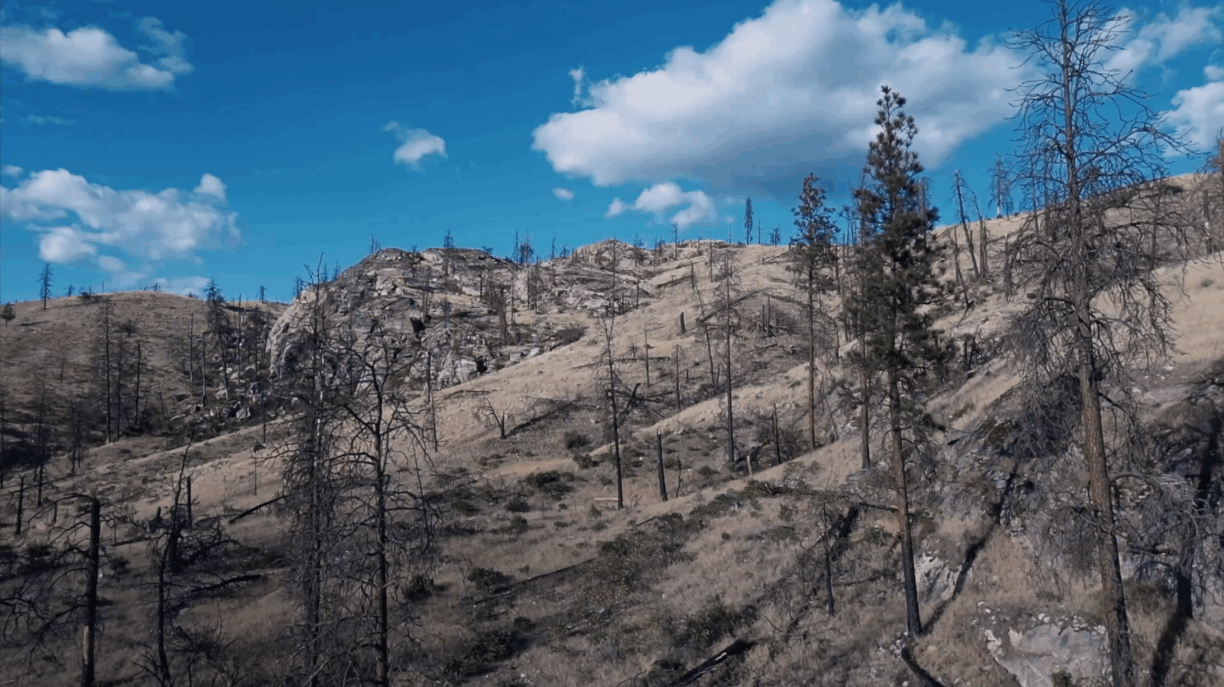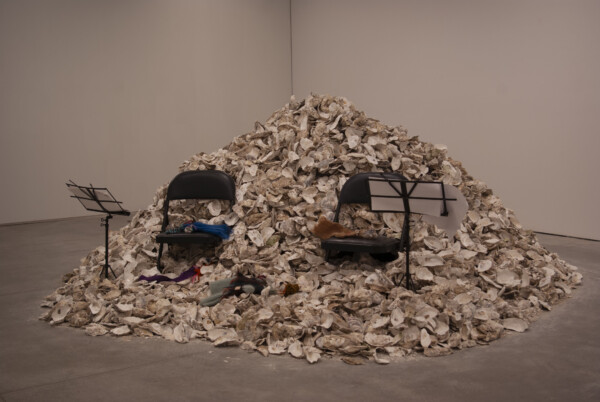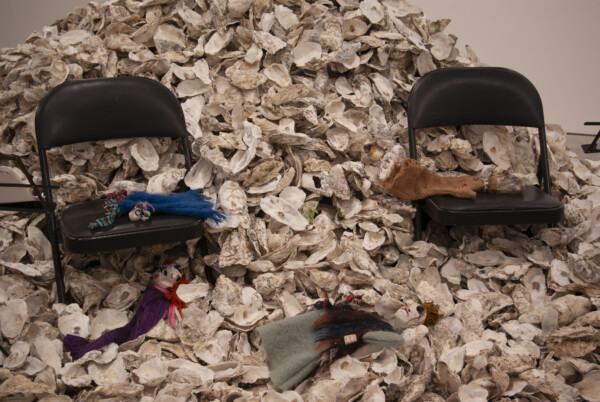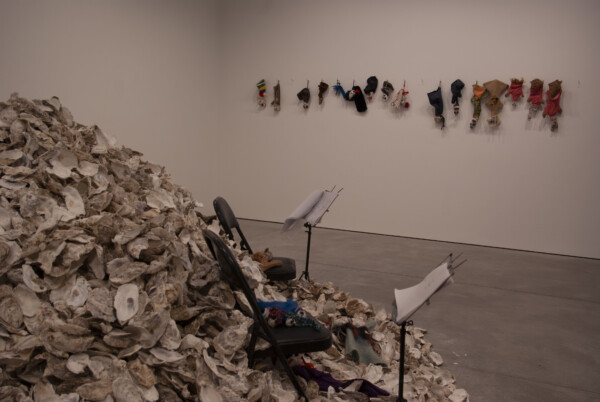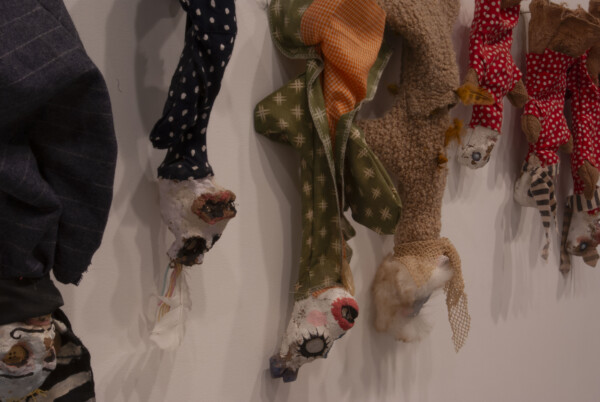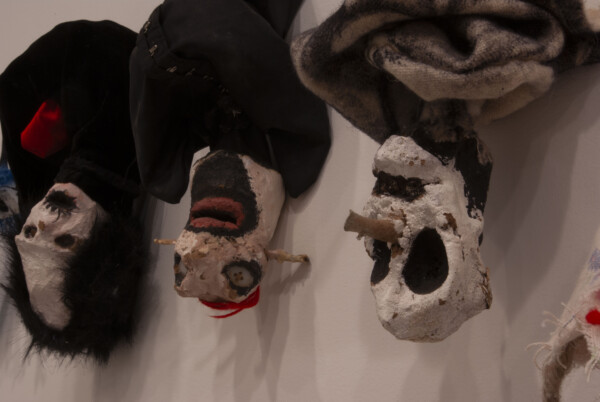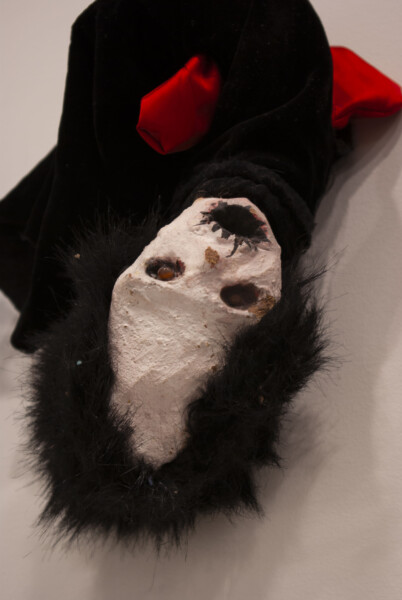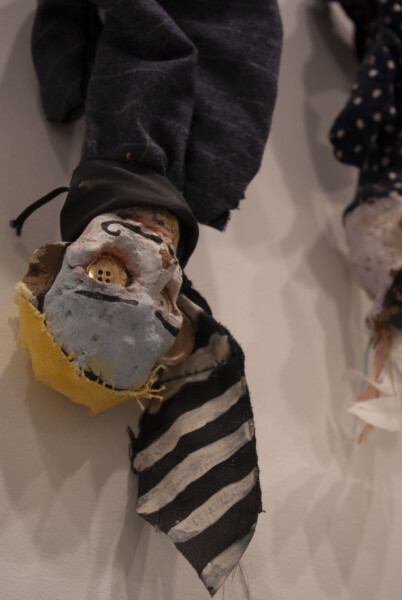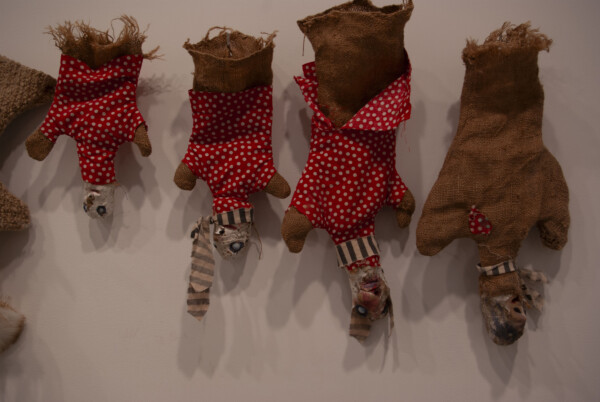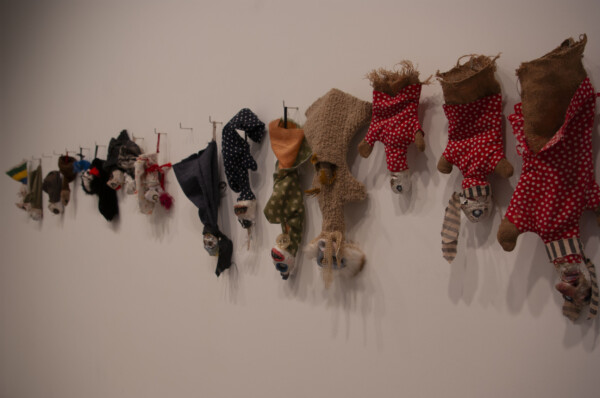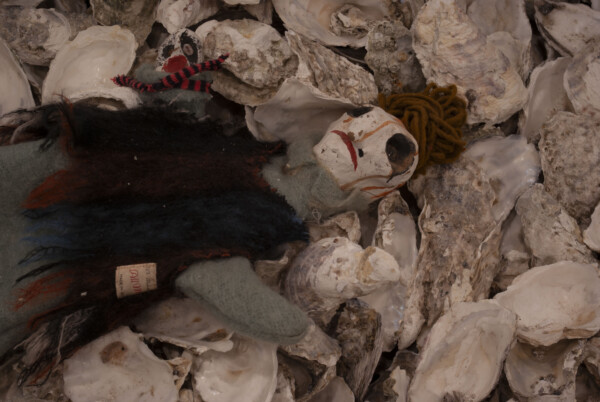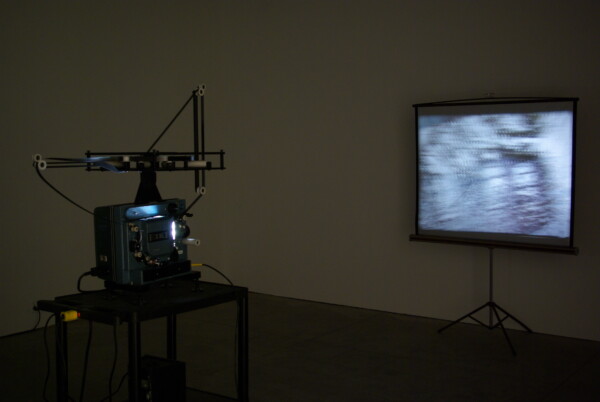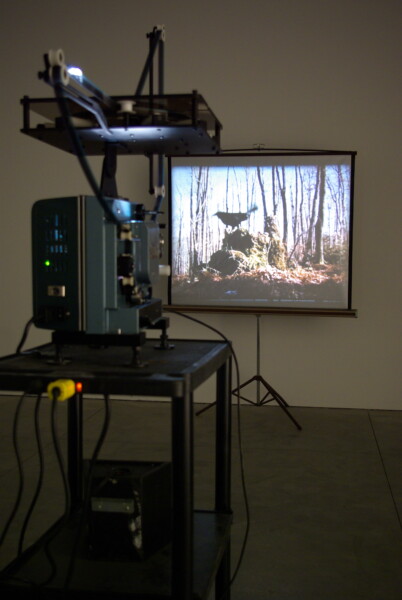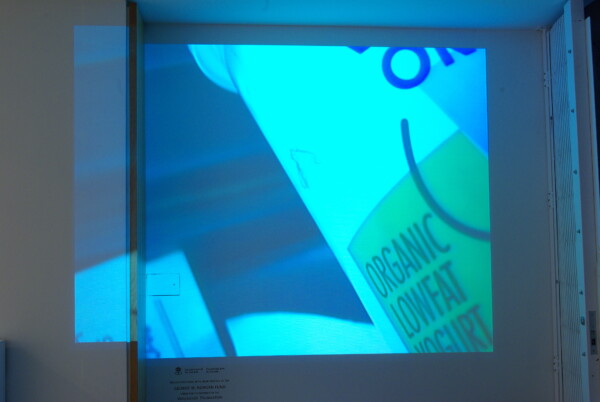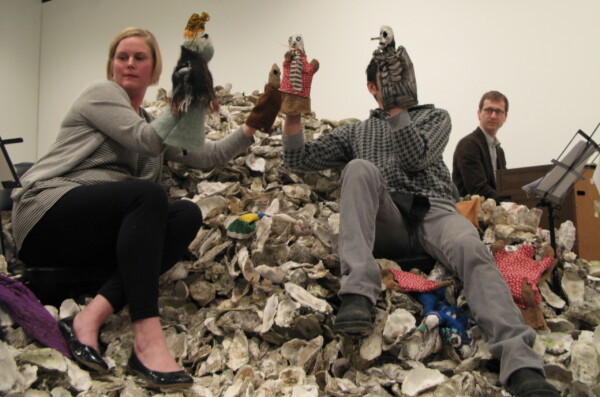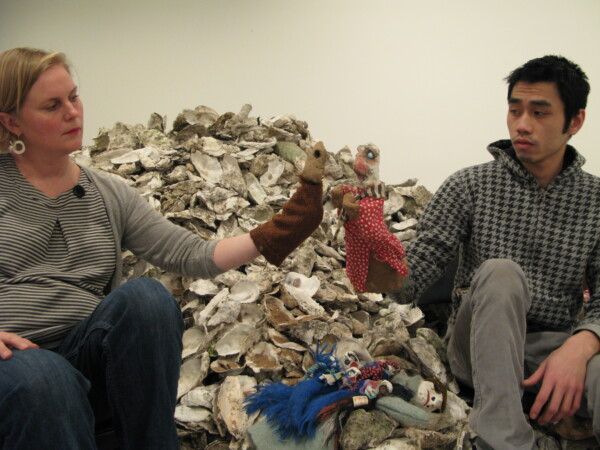- Of vagrant dwellers in the houseless woods
- Of vagrant dwellers in the houseless woods
- Of vagrant dwellers in the houseless woods
- Of vagrant dwellers in the houseless woods
Of vagrant dwellers in the houseless woods
13 March–
18 April 2009
Curated by: Eric Fredericksen (Guest Curator), Jonathan Middleton (Director Curator)


Of vagrant dwellers in the houseless woods, exhibition at Or Gallery, 2009.


Of vagrant dwellers in the houseless woods, exhibition at Or Gallery, 2009.


Of vagrant dwellers in the houseless woods, exhibition at Or Gallery, 2009.


Lutz Bacher, Organic, 2006. Still from a projected video. Courtesy of Ratio 3, San Francisco, and Taxter and Spengemann, New York.
Of vagrant dwellers in the houseless woods
Lutz Bacher (Berkeley), Drakkar Sauna (Lawrence, Kansas), Heather and Ivan Morison (Wales), Oscar Tuazon (Paris/Tacoma), Jordan Wolfson (New York/Berlin)
Curated by: Eric Fredericksen (Guest Curator), Jonathan Middleton (Director Curator)
I hate her. I hate her, a puppet show by Heather and Ivan Morison, performed by Betsey Brock and Mike Pham
Friday, March 13, 7:30 pm
The Or Gallery announces “Of vagrant dwellers in the houseless woods,” including work by Lutz Bacher, Drakkar Sauna, Heather and Ivan Morison, Oscar Tuazon, and Jordan Wolfson, and curated by Eric Fredericksen. The exhibition includes works in video, film, sculpture, puppets, photographs, and handbound books. “Of vagrant dwellers…” is a tour through the sublime, in a degraded but recognizable form. It argues that the concept of the sublime—objects or experiences that exceed comprehension—retains discursive possibilities even as the word itself decorates tourism brochures or dessert menus. The exhibition engages what Peter Culley has called the “critical and informed relationship to various landscape traditions [which] has been a defining feature of Vancouver’s postmodern aesthetic.”
The title is drawn from Wordsworth’s “Lines Written a Few Miles above Tintern Abbey,” written in 1798 as part of an uncompleted project to be titled “The Recluse.” The surrounding lines sketch out an imagined figure, a stand-in for a wilder existence the poet cannot access directly:
…wreaths of smoke/ Sent up, in silence, from among the trees,/ With some uncertain notice, as might seem,/ Of vagrant dwellers in the houseless woods,/ Or of some hermit’s cave, where by his fire/ The hermit sits, alone.
This imagined hermit has contemporary analogues among the works on view, arriving in the form of Bacher’s Polaroids of plastic troll dolls, a talking crow in Jordan Wolfson’s “Perfect Lover,” or rough puppets inhabiting the Morisons’ sculpture of a midden.
The discourse of the sublime was influential in art, architecture, gardening, and poetry, in Burkean and Kantian aesthetics and in the ethical thought of the Scottish Enlightenment. The 19th century settlement of the North American West was promoted though an instrumentalization of the sublime, as in spectacular painted, photographed, or written images of wilderness. The sublime is largely associated with natural creation, but also with monumental human endeavours (skyscrapers, the lunar landing) and altered states of consciousness. The overwhelming terror and pleasure of the sublime links the experience of perceiving the Alps and the skyline of Sao Paulo. It’s also a link between the attacks of September 11 and Donald Rumsfeld’s “Shock and Awe” operation at the start of the Gulf War. In this exhibition, natural awe, hallucinogens, and forests appear as various modes in a search for overmatching experience, for a post-apocalyptic return to wilderness, for altered states of consciousness. As opposed to fully instrumental uses, the works approach what the poet Lisa Robertson describes as a “kind of zone of metaphor or incompletion or unraveling that offers itself as the potential site for new meanings.”
These zones are discovered not in untouched wilderness but in the seat of a used Subaru while listening to Berkeley’s freeform community radio station, as in Lutz Bacher’s video “Organic.” Oscar Tuazon, born on the Olympic Peninsula and currently living in Paris, contributes an editioned hand-bound book of his stories and photographs, which feature moments of entropic dissolution in semiwild landscapes. He also presents a hand-bound collection of issues of “Dwelling Portably,” a zine published for the past thirty years somewhere near Philomath, Ore., by a couple living invisibly and off the grid in the Oregon woods. Jordan Wolfson’s 16mm film loop “Perfect Lover” shows a realistic, animated, talking crow in woodland scenes, calling out the hours of the day in a monotone, uncanny and mundane. Heather and Ivan Morison’s large sculpture of shells in the form of a midden becomes the stage for a scabrous puppet show, “I hate her. I hate her.” Toward the end of the show’s run, Lawrence, Kansas, duo Drakkar Sauna will perform at locations in and around Vancouver and in the gallery. Their songs, including “Spear for When the Bear Comes” and “There’s Not Enough Tits on a Wolf,” will illuminate the exhibition’s themes.
Eric Fredericksen is the Director of Western Bridge (Seattle).
Image: Lutz Bacher, Organic, 2006. Still from a projected video. Courtesy of Ratio 3, San Francisco, and Taxter and Spengemann, New York.
Exhibition Opening:
Friday, March 13, 2009
8PM
